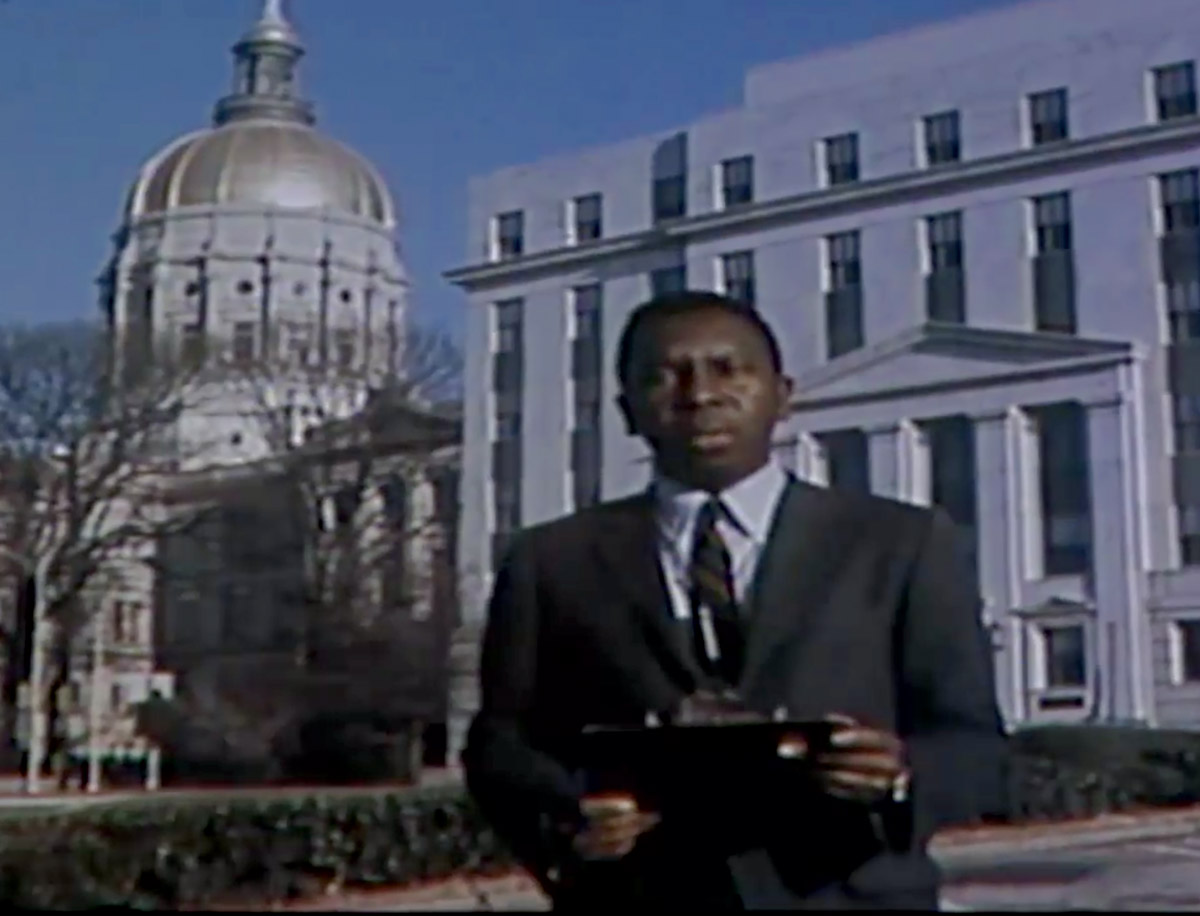
Photograph courtesy of WSB Newsfilm Collection, University of Georgia Libraries
On a summer morning in 1967, Lorenzo “Lo” Jelks walked into the WSB-TV studios for his first day of work. That wouldn’t have been noteworthy, except that Jelks, an American descendant of enslaved Africans, would be the first black on-air reporter at what was then (and now) one of the largest television stations in the Southeast.
Jelks was 28, a graduate of Clark College (now Clark Atlanta University), and an Army veteran. He’d spent the previous decade working as a reporter at various radio stations on the East Coast, most recently at WIGO in Atlanta. It was the late Ray Moore, WSB-TV’s legendary news director, who sought Jelks out. “I believe that the station made a conscious decision to include people of color,” Jelks says now.
At the time, Jelks didn’t consider himself a pioneer, but in the provincial Atlanta of a half-century ago, he and other reporters of color that followed him represented a coming sea change. While the mainstream media covered the civil rights movement on the streets and in the halls of power, it rarely turned the focus on their own, leaving an essential part of the movement unexamined.
Jelks’s experience, along with that of other pioneering black broadcast journalists in Atlanta, has now been told in a 43-minute documentary called Black and Reporting: The Struggle Behind the Lens, produced by the Atlanta Association of Black Journalists with donated production services from AIB-TV.
“I thought it necessary to tell their stories because nobody else is,” says Carol Gantt, president of the AABJ and coproducer of the film. “These people paved the way for us to get our feet in the door. Working on the film really put a lot of things in perspective for me. What they had to go through makes the issues we deal with seem small in comparison.”
In the documentary, Monica Pearson recalls once touching the hand of her white co-anchor, Wes Sarginson, on air. Hate mail followed, reminding her of “her place.” Jocelyn Dorsey, who reported and anchored at WSB-TV, was covering the 1970 gubernatorial campaign kickoff of J.B. Stoner, an avowed racist who was later convicted in the 1958 bombing of Bethel Baptist Church in Birmingham, when someone spat at her. “I had no idea what I was walking into,” she recalls.
Collie Burnett, currently the president and CEO at AIB-TV, started at WSB Radio as a silent disc jockey in 1969 and became a news journalist three years later. He recalls interviewing Wernher von Braun in 1973, four years before the legendary aerospace engineer’s death. Von Braun, a native of Germany, helped build Nazi Germany’s V2 rocket program in World War II. “I asked him, ‘How could a German scientist get more freedom here than a black scientist in Alabama?’” recalls Burnett. “He never answered that question.”
At 80, Jelks is retired but remains editor of the AUC Digest, a print publication that he founded when he was a student in the late ’50s. “I always like trying to motivate people involved in the media,” says Jelks of the documentary. “It felt good to be included.”
Tamara Wilson, the film’s writer, director, and co–executive producer and a production manager and producer at CNN, notes, “After every interview, I made sure to say ‘thank you’ because I wouldn’t be here without them.”
The documentary can be purchased (download, $10; DVD, $20) via aibtv.com. Proceeds benefit AABJ’s Xernona Clayton Scholarship Fund for college students.
This article appears in our June 2019 issue.
Correction: A previous version of this story incorrectly named Ray Moore as Roy Moore. This version has been updated.













